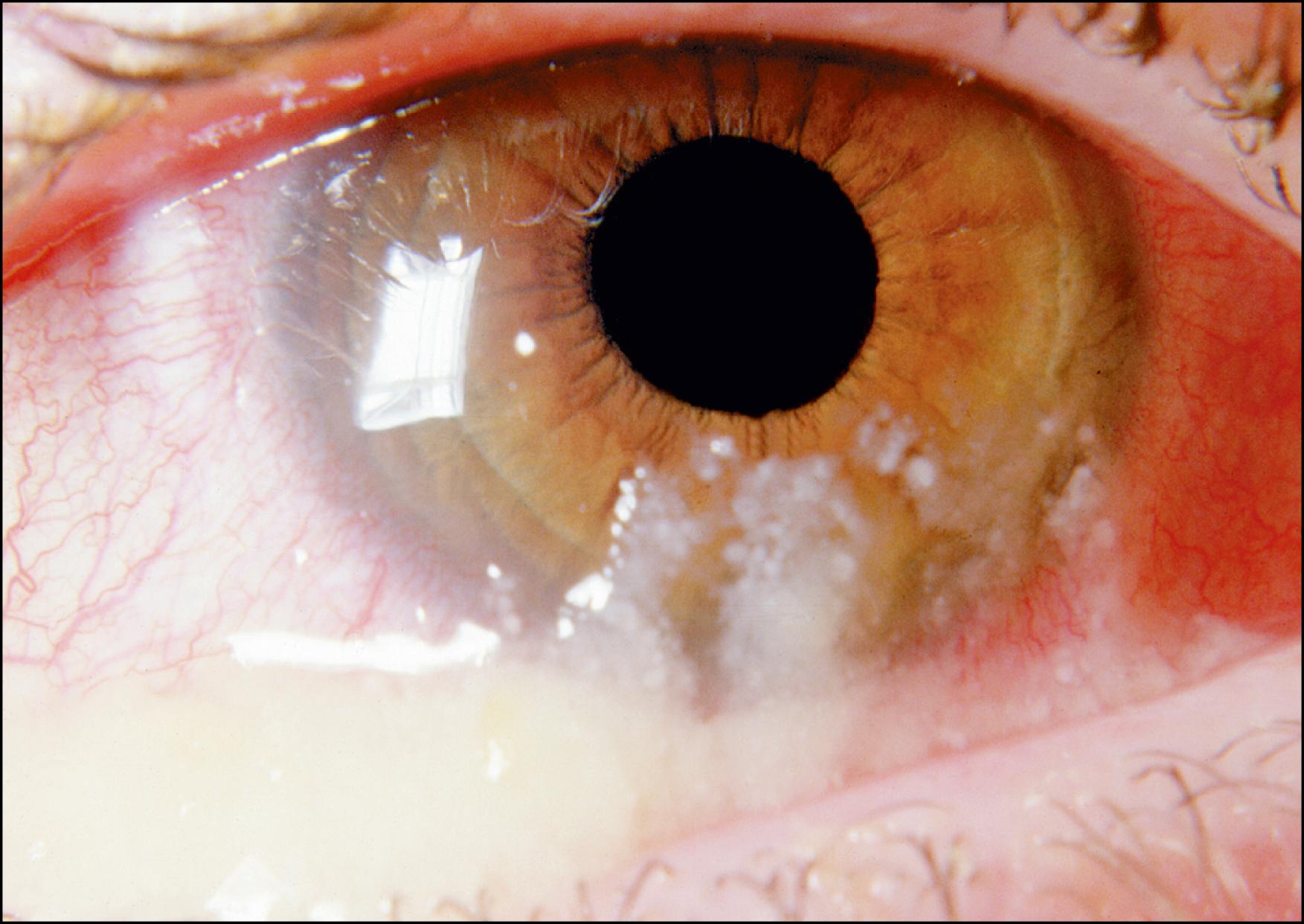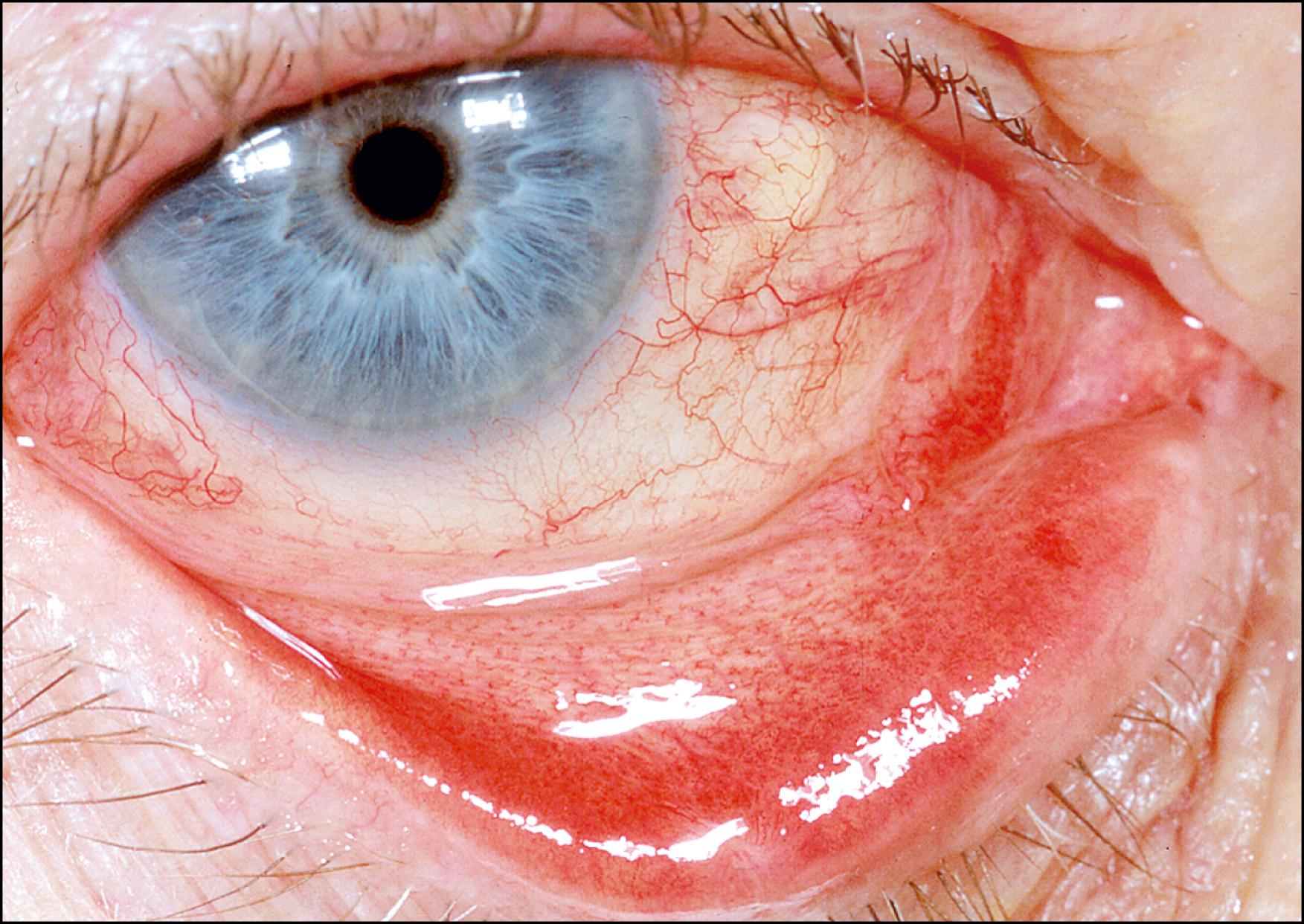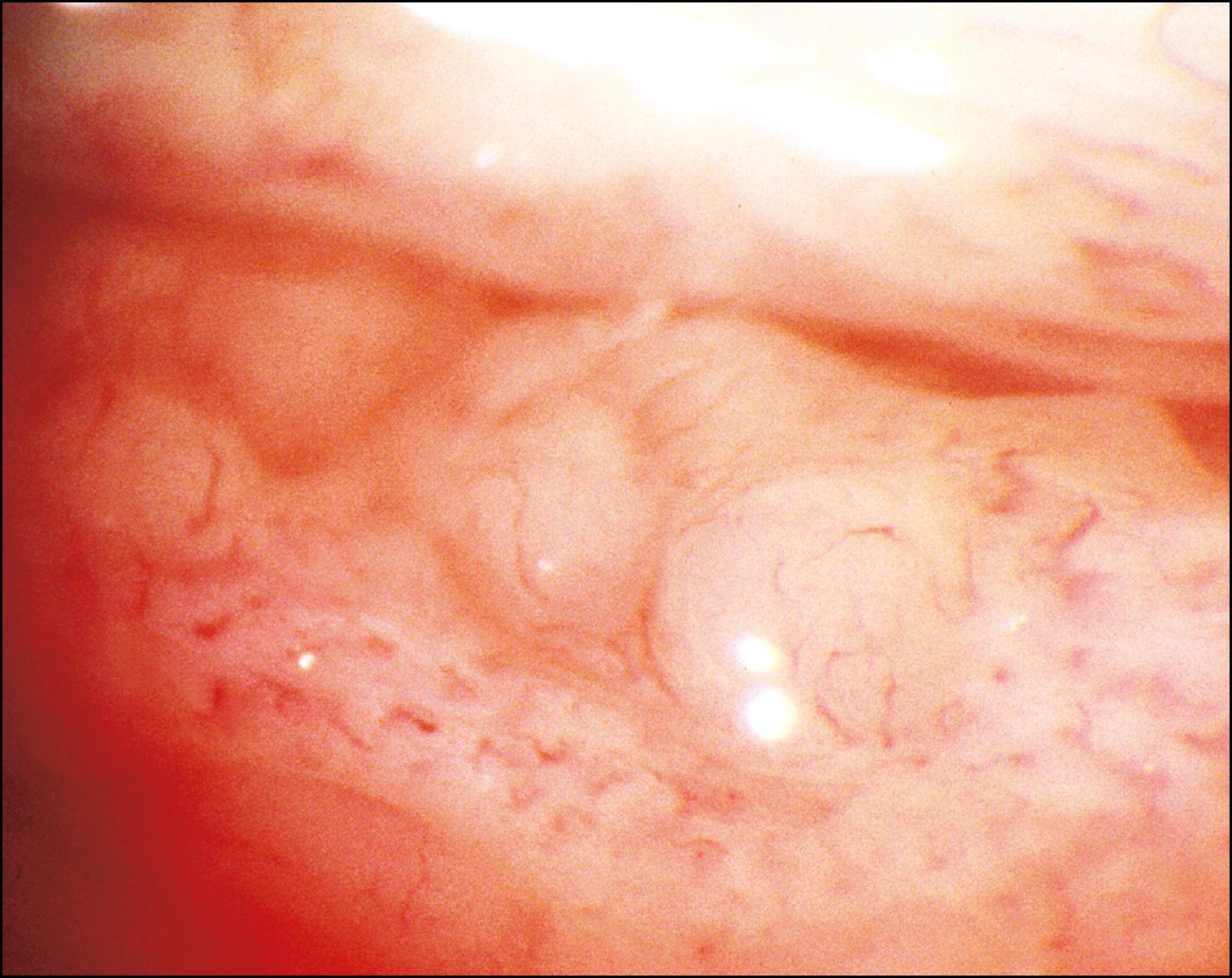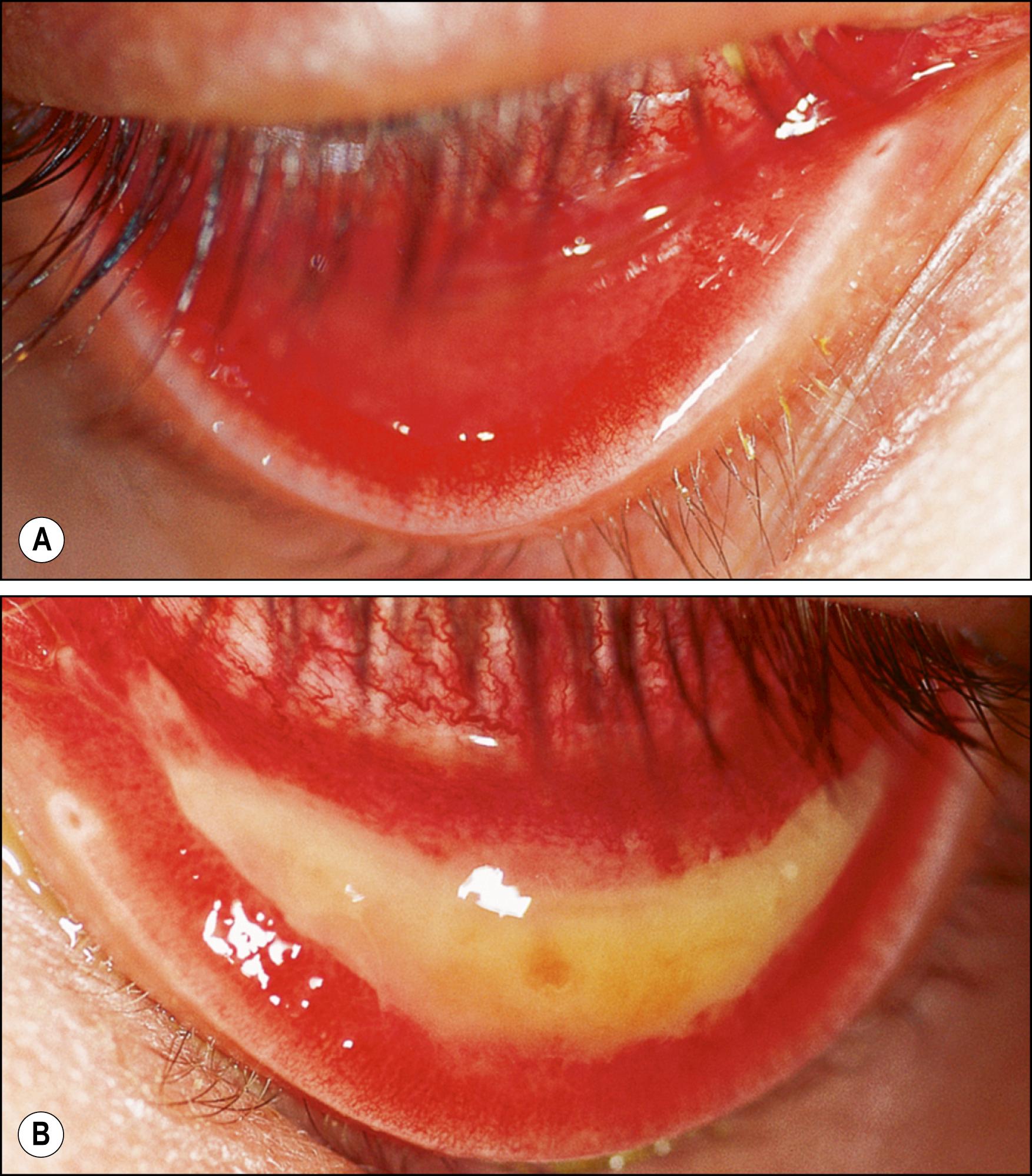Physical Address
304 North Cardinal St.
Dorchester Center, MA 02124
The majority of acute conjunctivitis cases are difficult to distinguish from adenoviral conjunctivitis.
Bacterial conjunctivitis is typically benign with a mild and self-limited course; therefore, no antibiotic use is recommended.
Urgent treatment of gonorrheal conjunctivitis is necessary to prevent severe corneal ulceration and perforation. Systemic management is the main treatment.
Coinfection of Chlamydia with gonorrhea is common and treatment is targeted to both organisms.
The incidence and prevalence of bacterial conjunctivitis is difficult to determine. Most cases are mild, self-limited, and patients do not seek medical attention. Yet conjunctivitis represents approximately 50% of ophthalmic conditions encountered in primary care and 30% of diagnoses in emergency room visits. ,
Infectious forms of conjunctivitis develop from exogenous contamination or a predominant organism from the ocular surface flora. Inoculation occurs from contaminated fingers, oculogenital spread, fomites, infection of adnexal structures, transmission from infected individuals, and iatrogenic or accidental trauma. Increased susceptibility occurs with compromise of the tear film, defects or inflammation of the epithelial barrier, exposure from lid abnormalities, giant fornix syndrome, immunosuppression, contact lens use, and age.
The presentation of bacterial conjunctivitis is a spectrum spanning both duration and severity. Most common is acute conjunctivitis, which is localized to the ocular surface and typically self-limited. In contrast, hyperacute and chronic presentations indicate a need for further evaluation and treatment.
The Antibiotic Resistance Monitoring in Ocular Microorganisms (ARMOR) surveillance study conducted on conjunctival isolates from 2009 to 2016 throughout the United States identified the most common bacterial pathogens ( Table 37.1 ). In children, Haemophilus influenzae is the predominant cause followed by Streptococcus pneumoniae , Staphylococcus aureus , and Staphylococcus epidermidis . In contrast, prevalent bacterial causes are reversed in adults, with the majority caused by S. aureus or coagulase negative S. epidermidis , followed by S. pneumoniae , H. influenzae , and Pseudomonas aeruginosa particularly in contact lens wearers.
| Adults | Children |
|---|---|
| Viral Staphylococcal Streptococcus pneumoniae Haemophilus influenzae Pseudomonas aeruginosa |
H. influenzae S. pneumoniae Staphylococcus aureus and Staphylococcus epidermidis |
Signs and symptoms significantly resemble those in viral conjunctivitis, particularly epidemic keratoconjunctivitis or pharyngoconjunctival fever. The overlap in clinical presentation is compared in Table 37.2 . Symptoms include sudden onset of irritation, redness, swelling, and eyelids that are “glued” together. Clinical findings include discharge ( Fig. 37.1 ), conjunctival papillae ( Fig. 37.2 ) and chemosis, and injection.
| Bacterial | Viral | |
|---|---|---|
| Age | <12 years | >12 years |
| Season | December–April | Summer |
| Sick contact | Yes for small children | Yes |
| Laterality | Bilateral, but asymmetric onset | Unilateral, or sequential |
| Symptoms | Eyelid matting Milder itching Less burning Less foreign body sensation Chemosis Redness localized to tarsal conjunctiva and peripheral bulbar conjunctiva |
Eyelid matting Significant itching More burning Severe foreign body sensation Chemosis Redness |
| Discharge | More purulent Less watery Mucoid Scant |
Less purulent More watery Mucoid Bloody |
| Hemorrhages | Less common and small Streptococcus pneumoniae Haemophilus aegyptius |
More common |
| Membranes and pseudomembranes | Corynebacterium diphtheriae Streptococcus pyogenes Borrelia vincentii Fusobacterium |
Epidemic keratoconjunctivitis (EKC) |
| Papillae | + | |
| Follicles | Moraxella Neisseria meningitidis Chlamydia trachomatis |
Pharyngoconjunctival fever, EKC |
| Cicatrizing | C. trachomatis C. diphtheriae |
EKC |
| Lymphadenopathy | Less common Neisseria gonorrhoeae C. diphtheriae Mycobacterium tuberculosis Syphilis |
More common |


Certain bacterial species can present with more severe manifestations, including lymphadenopathy, follicles ( Fig. 37.3 ), membranes and pseudomembranes ( Fig. 37.4A and B ), subconjunctival hemorrhage, and cicatricial changes (see Table 37.1 ).


The interaction between pathogen and the host immune response can be detrimental to the ocular surface. Marginal infiltration, ulceration, and perforation can occur with Haemophilus aegyptius , Neisseria gonorrhoeae , Streptococcus pyogenes , and Moraxella. H. aegyptius also may cause phlyctenular keratoconjunctivitis. Corynebacterium diphtheriae may cause cicatricial changes from conjunctival necrosis resulting in xerosis, symblepharon, trichiasis, and entropion. The initial presentation of Chlamydia trachomatis can also cause severe inflammation; further details are described later in this chapter.
Certain species can also present with serious systemic infections. H. influenzae has nonencapsulated and encapsulated strains. The nonencapsulated strain is associated with an upper respiratory infection, and 25% of children may also have otitis media, while 18% of affected children can develop meningitis. The encapsulated strain produces a more severe course. Complications may include bacteremia, meningitis, septic arthritis, epiglottitis, and cellulitis. C. diphtheriae conjunctivitis rarely occurs after vaccination; however, when it does occur, toxins from diphtheria can paralyze extraocular muscles and accommodation, impair respiration, and cause cardiac toxicity. Children may have a preceding membranous pharyngitis. Treatment will require erythromycin as well as antitoxin therapy. H. aegyptius is highly contagious and can cause Brazilian purpuric fever, a fatal childhood illness that follows purulent conjunctivitis.
Become a Clinical Tree membership for Full access and enjoy Unlimited articles
If you are a member. Log in here